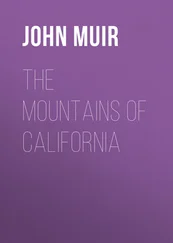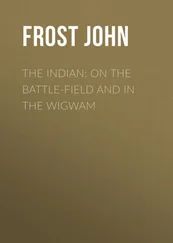John Frost - History of the State of California
Здесь есть возможность читать онлайн «John Frost - History of the State of California» — ознакомительный отрывок электронной книги совершенно бесплатно, а после прочтения отрывка купить полную версию. В некоторых случаях можно слушать аудио, скачать через торрент в формате fb2 и присутствует краткое содержание. Жанр: История, foreign_antique, foreign_prose, на английском языке. Описание произведения, (предисловие) а так же отзывы посетителей доступны на портале библиотеки ЛибКат.
- Название:History of the State of California
- Автор:
- Жанр:
- Год:неизвестен
- ISBN:нет данных
- Рейтинг книги:3 / 5. Голосов: 1
-
Избранное:Добавить в избранное
- Отзывы:
-
Ваша оценка:
- 60
- 1
- 2
- 3
- 4
- 5
History of the State of California: краткое содержание, описание и аннотация
Предлагаем к чтению аннотацию, описание, краткое содержание или предисловие (зависит от того, что написал сам автор книги «History of the State of California»). Если вы не нашли необходимую информацию о книге — напишите в комментариях, мы постараемся отыскать её.
History of the State of California — читать онлайн ознакомительный отрывок
Ниже представлен текст книги, разбитый по страницам. Система сохранения места последней прочитанной страницы, позволяет с удобством читать онлайн бесплатно книгу «History of the State of California», без необходимости каждый раз заново искать на чём Вы остановились. Поставьте закладку, и сможете в любой момент перейти на страницу, на которой закончили чтение.
Интервал:
Закладка:
John Frost
History of the State of California / From the Period of the Conquest by Spain to Her Occupation by the United States of America
PREFACE
The occupation of California by the people of the United States, and the discovery of its rich gold mines, form a new era in the history of the world. According to present appearances, these events forebode a complete revolution in monetary and commercial affairs. The receipts of gold from California have already produced a sensible effect on the financial affairs of our country; and far-seeing people predict an entirely new state of things with respect to the relative value of money and property.
Still more important effects are anticipated from the establishment of a new, rich, and enterprising State of the American Union on the shores of the Pacific. Railroads across the continent will soon transport the rich products of Eastern Asia, by a quick transit, to the Atlantic cities and to Europe; and a passage to China or India, which was formerly a serious undertaking, will become a pleasant excursion.
To gratify the public curiosity with respect to the history and present state of this new member of the Union, is the purpose of this volume. In preparing it, the author has passed rapidly over the early history, and dwelt chiefly on recent events, and the actual state of the country, as he considered that, by this course, utility would be more effectually consulted.
In the Appendix he has introduced the constitution of California, and some official documents, whose importance demanded their preservation in a permanent form.
CHAPTER I
The territory called California is that part of North America situated on the Pacific Ocean, and extending from the 42° of north latitude southwardly to 22° 48', and from 107° longitude, west from Greenwich, to 124°. It is bounded on the north by Oregon territory, east by territories belonging to the United States and the Gulf of California, and on the south and west by Mexico and the Pacific Ocean. California is naturally divided into two portions; the peninsula, called Lower California, and the territory extending northward from the peninsula, on the Pacific Ocean, called Upper California. The line of division between Upper and Lower California runs nearly along the 32d parallel of latitude, westward from the head of the Gulf of California.
The peninsula of California is about one hundred and thirty miles in breadth, where it joins the continent. It extends south-eastwardly, generally diminishing in breadth, till it terminates in two points. The point farthest south-west is called Cape San Lucas. The other, sixty miles east by north of San Lucas, is called Cape Palmo. The peninsula is about seven hundred miles long.
Upper California extends, upon the Pacific, from the 32d parallel of latitude, northward to the 42d parallel, a distance of about seven hundred miles. It is separated from Oregon by a range of highlands, called the Snowy Mountains, or, by the Spaniards, the Sierra Nevada. The eastern limit of Upper California is rather uncertain. By some it is considered as including the region watered by the Colorado River, while others limit it by the great mountain range that extends along the western side of the continent.
The Californian peninsula seems to be a prolongation of the great western chain of mountains. It consists entirely of high, stony ridges, separated by sandy valleys, and contains very few tracts of level ground. In a general view, it might be termed an irreclaimable desert. The scarcity of rain and the small number of springs of water, with the intense heat of the sun's rays, uninterrupted in their passage, render the surface of the country almost destitute of vegetation. Yet in the small oases formed by the passage of a rivulet through a sandy defile, where irrigation is possible, the ground may be made to produce all the fruits of tropical climes, of the finest quality, and in great quantity. The southern portion of the peninsula contains several gold mines, which have been worked, though not to any great extent. On the Pacific side, the coast offers many excellent harbors, but the lack of fresh water near them proves an obstacle in the way of their occupation. The principal harbors are the Bay of la Magdalena, separated from the ocean by the long island of Santa Margarita, the Bay of Sebastian Vizcaino, east of the Isle of Cedaro, Port San Bartolomé, sometimes called Turtle Bay, and Port San Quintin, a good harbor, with fresh water in the vicinity, and called by the Spanish navigators the Port of the Eleven Thousand Virgins.
The great westernmost range of mountains runs northward from the peninsula, nearly parallel with the Pacific coast, to the 34th parallel of latitude, below which is Mount San Bernardin, one of the highest peaks in California, about forty miles from the ocean. Farther northward, the space between the mountains and the coast becomes wider, and, in a few places, reaches eighty miles. The intermediate region is traversed by lines of hills, or smaller mountains joined with the great range. The most considerable of the inferior ridges extends from Mount San Bernardin to the south side of the entrance of the Bay of San Francisco, where it is called the San Bruno Mountains. Between this range and the coast runs the Santa Barbara range, terminating at the Cape of Pines, on the south-west side of the Bay of Monterey. Bordering on the Bay of San Francisco, on the east side, is the Bolbona ridge. Beyond these are lines of highlands which stretch from the great chain and terminate in capes on the Pacific.
There are many streams among the valleys of Upper California, some of which, in the rainy season, swell to a considerable size. But no river, except the Sacramento, falling into the Bay of San Francisco, is known to flow through the maritime range of mountains, from the interior to the Pacific. The valleys thus watered offer abundant pasturage for cattle.
The principal harbors of Upper California are those offered by the Bays of San Francisco, Monterey, San Pedro, Santa Barbara, and San Diego. The Bay of San Francisco is one of the finest harbors in the world. The combined fleets of all the naval powers of Europe might there find safe shelter. It is surrounded by ranges of high hills, and joins the Pacific by a passage two miles wide and three in length. The other harbors can only be frequented in the fine season, and afford a very insecure shelter for vessels. San Diego is the farthest south. The bay at that place runs ten miles eastward into the land, and is separated from the ocean by a ridge of sand. Proceeding northward, about seventy miles, the Bay of San Pedro is next met. It is open to the south-west winds, but sheltered from the north-west. About a hundred miles north-west of San Pedro, is the harbor of Santa Barbara. It is an open roadstead sheltered from the north and west winds, but exposed to the violence of the south-westerly storms, which prevail during the greater part of the year. A hundred miles farther north is the Bay of Monterey. It is extensive, and lies in an indentation of the coast, somewhat semicircular. The southernmost portion is separated from the ocean by the point of land ending at the Cape of Pines. In the cove thus formed, stands the town of Monterey, for some time the capital of California. The harbor affords but a poor shelter from storms.
The Sacramento and San Joachim are the principal rivers of California, but the Sacramento alone is navigable to any extent worthy of mention. There are numerous small streams and lakes in the interior, the principal outlet of which is the Colorado River. The valleys through which these streams flow are fertile, and afford good pasture for cattle; but the remainder of the region between the maritime and the Colorado ranges of mountains is a barren waste of sand.
Читать дальшеИнтервал:
Закладка:
Похожие книги на «History of the State of California»
Представляем Вашему вниманию похожие книги на «History of the State of California» списком для выбора. Мы отобрали схожую по названию и смыслу литературу в надежде предоставить читателям больше вариантов отыскать новые, интересные, ещё непрочитанные произведения.
Обсуждение, отзывы о книге «History of the State of California» и просто собственные мнения читателей. Оставьте ваши комментарии, напишите, что Вы думаете о произведении, его смысле или главных героях. Укажите что конкретно понравилось, а что нет, и почему Вы так считаете.












